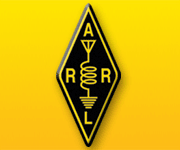Ham Hoping to Crowd-Fund Experimental Time at HAARP Facility
Another Luxembourg Effect experiment could take place at Alaska’s High-Frequency Active Auroral Research Program (HAARP) facility during its September research campaign. Jeff Dumps, KL4IU — a self-described construction worker, electronics technician, and radio enthusiast — wants to purchase 12 minutes at the HAARP controls to carry out his investigation, which he’s hoping to fund with donations. Dumps told ARRL that if he doesn’t meet his funding goal, he’ll donate whatever money has been contributed to the Arctic Amateur Radio Club (KL7KC) and HAARP.
“My experiment will attempt to answer some questions about how audio frequencies transfer between radio stations during the Luxembourg Effect (Ionospheric Cross Modulation),” Dumps explained in describing his proposed experiment.
The super-power ionosphere research facility is owned and operated by the University of Alaska-Fairbanks Geophysical Institute. The HAARP site includes a huge array of transmitting antennas, transmitters and amplifiers, and computerized controls. In the past it has been used for experiments that involve ionospheric heating.
Dumps concedes that his is an amateur’s approach to a science experiment. “It may not be in a typical fashion one would see from a physics student or a scientist,” he said. “Even if my experiment doesn’t provide any insightful information, as happens quite often in real scientific experiments, it will be a great opportunity to test a hypothesis.”
Dumps said he hopes his experiment will inspire and motivate others to pursue their own scientific interests.
Space Physics Group Assistant Research Professor Chris Fallen, KL3WX, who conducted is own Luxembourg Effect experiment earlier this year, said he wishes Dumps well in his efforts. Fallen transmitted some music during his own Luxembourg Effect experiments last February. In addition to tones, he transmitted a dance track, a Pachelbel Canon arrangement, and a variation of Row, Row, Row Your Boat. Dumps composed some of the music, and he arranged and performed all of it.
“Generally any scientist with funds can conduct experiments with HAARP, provided the experiment conforms with technical limitations of the facility and with federal regulations,” Fallen told ARRL. “I think it is exciting to see public citizen-scientist interest in performing — and funding — HAARP experiments. There are many new science opportunities when the collective creativity, knowledge, and resources of radio enthusiasts are unleashed.”
Fallen said UAF’s Geophysical Institute is operating HAARP with a “user fee model,” in which fees paid for HAARP time by scientists — typically with federal grant support — fund the operations and maintenance of the facility. Currently, that fee is $5,000 per hour, to cover such expenses as generator fuel, compensation of year-round support staff, and heating the facility throughout the winter. “Short experiments consisting of a few hours or less are typically bundled together in ‘experiment campaigns’ for cost efficiency,” Fallen explained.
If the crowd-funding campaign is successful, Fallen said he plans to help Dumps in constructing an experiment they can perform and push whatever buttons needed to make it happen.
Back






